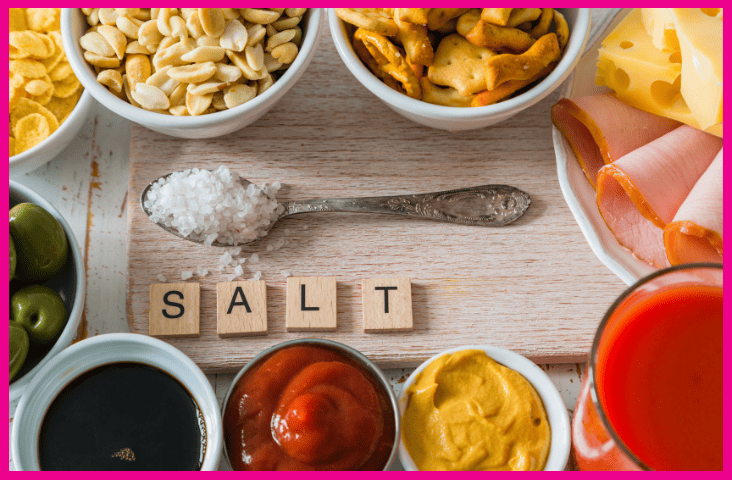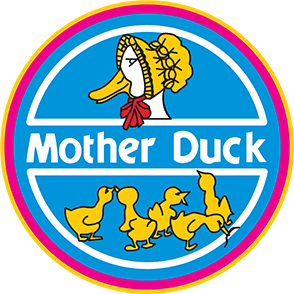
Spare the Salt: How can we help our children (and ourselves) to eat less sodium?
I often have people asking me about salt in processed foods, and it really makes me happy to see the level of knowledge and concern parents and carers have about this issue. The worrying fact is that many children’s salt intake is much too high. A 2021 study found that one in three Australian toddlers were eating more than the recommended maximum salt intake. And research released in 2016 indicated that almost nine in ten Melbourne pre-schoolers were eating too much salt. On average, they were actually eating one and a half times the recommended limit for their age group.
What’s the problem with salt?
There are several ways a high-salt diet can harm our children. For one, a baby or very young child’s kidneys, which process the body’s salt, are not yet fully developed and just can’t cope with higher salt intakes. And while babies or young children are unlikely to develop high blood pressure as adults might, a higher salt intake means that their blood pressure is likely to be higher than it would otherwise be. This worsens with age, so if this trend continues into adulthood it could make them more likely to develop high blood pressure, thereby increasing their risk of stroke and heart attack.
Another issue is that children may develop a taste preference for higher-salt foods, meaning they will continue to eat too much of them throughout life. Again, this increases the risk of high blood pressure.
Eating too much salt is also suspected to play a role in children becoming overweight. One reason for this may be that the salt makes children thirsty, so they are more likely to reach for sugary drinks that add extra calories.

Finding the salt
While many people are aware that they should avoid adding salt to food for their babies and children (and themselves), they may not realise that most of the salt we take in comes from processed foods. In other words, most of the salt we eat is already in the foods we buy from the supermarket, cafe or take-away shop. This makes it extra-important to check labels whenever possible. You’ll find that salty-tasting foods, such as chips or ham, are not the only ones to watch out for. Foods not thought of as salty, such as some breakfast cereals and cheese, can contain a very high level of salt. Note that over 80% of the salt in the study of Melbourne pre-school children came from processed and ‘ultraprocessed’ foods*.
When reading labels, the number to look at is listed as sodium, which is the chemical component in salt that causes blood pressure to rise. (The other is component is chloride, thus salt’s chemical name is sodium chloride.) Always look at the amount per 100 grams, to avoid having to adjust for different serve sizes. As a rule of thumb, aim to mostly choose foods that have less than 400mg sodium per 100g of the food, with high-salt foods in very small amounts or as an occasional choice.
- Foods with less than 120mg sodium/100g are low in salt and are the best choices. Foods labelled as ‘low salt’ fall into this category.
- Foods with less than 400mg sodium/100g are good choices.
- Foods with 400-600mg sodium/100g are poorer choices.
- Foods with over 600mg sodium/100g are high in salt. They should only be eaten occasionally or in very small amounts.
When reading ingredient lists, watch out for the following ingredients, which are high in sodium: baking powder, celery salt, garlic salt, onion salt, meat or yeast extract, MSG (monosodium glutamate), rock salt, sea salt, sodium bicarbonate, sodium nitrate, vegetable salt and stock cubes.
Check on your child
If you would like to assess your child’s overall salt intake, you can check food labels and add up all the salt they have in a typical day and compare it to the Government’s recommendations. The Government gives the limit in terms of the sodium in salt, but this is also what the labels list, which makes it easier. Try to keep intake less than:
- 1000mg sodium or 2.5g salt if your child is 1-3 years old
- 1400mg sodium or 3.5g salt if your child is 4-8 years old
To convert sodium values to salt, simply multiply sodium by 2.5. So 1-3 year olds should limit their sodium intake to 1000mg sodium, which converts to 2500mg (or 2.5 grams) of salt. Do please be aware that this is a maximum – it’s much better for children to have a lower level than this.
You may not have values for unpackaged or fresh foods such as fruit, vegetables, meat and poultry, but these contain very little or no salt.

How can I reduce my child’s salt intake?
It’s easy for the salt to build up to higher amounts than is good for our kids. Here are a few guidelines to help keep salt intake down. Check the extra information sources below for more ideas.
- Keep salty snack foods such as chips to occasional treats, not everyday items.
- Check labels on food packaging to find the lower-salt options.
- Most fresh foods such as fruit and vegetables; grains such as rice and quinoa; most dairy foods; dried beans and lentils, and unprocessed meats, poultry and fish are very low in salt and should make up most of the foods we eat.
- Use salty sauces such as soy sauce and tomato sauce sparingly, and look for the lower-salt versions.
- Limit the amount of salty spreads such as Vegemite to a minimum.
- Leave salt shakers and bottles of soy and tomato sauce off the table so you can control what your little ones are adding to their food.
- Be aware that common foods such as bread, breakfast cereals, processed meats, cheese and even biscuits can be major sources of salt in our children’s diets. These are extra-important foods for label checking to find the lower-salt options.
- Ask for takeaway food to be served unsalted where possible. Then you can add salt if you feel it’s needed.
- If buying canned food, such as vegetables or tuna, look for those with no added salt.
- Remember that ‘gourmet’ salts are also high in sodium, so those such as Himalayan salt and sea salt also need to be limited to control children’s salt intake.
What about babies?
The government guidelines don’t include babies up to the age of one – they should have very little salt because their kidneys just can’t cope with much. While babies are only having breast milk or formula they’re not in danger of getting too much salt. If using store-bought foods when weaning, look for those specifically made for babies because their salt content is strictly controlled. Salt should not be added to foods you are making at home for babies, and any high-salt foods or ingredients should be avoided.

Replacing the flavour
You might wonder how to replace the flavour of salt in your children’s (and your) food. When taste buds are used to saltier food, it can take a few months to adjust to less salty meals – this is normal and just takes a little time. Remember that garlic, herbs, spices (in small amounts for small children) and flavourings such as a squeeze of lemon juice are great ways to add salt-free flavour and help your little ones on the journey to a lower-salt life.
*Note that ‘ultraprocessed’ foods in the study were defined as foods that ‘typically contain little or no whole foods, and often contain ingredients such as preservatives and sweeteners which make foods highly palatable and convenient.’
For more information:
- For great advice on reducing salt intake:
- For more on decoding nutrition labels
© Fiona Hinton 2024
About Fiona: Fiona Hinton is a dietitian, but describes herself as a nutrition translator, taking the science of nutrition and translating it into foods we love to eat, to nourish both body and soul. She has over 20 years of experience as a dietitian, working in a wide range of areas from hospital wards to running her own private practice. Fiona has a special interest in children’s nutrition. As a mum of three school-age boys, she has first-hand experience of the issues associated with feeding young children, such as weaning and fussiness. Fiona specialises in real-life strategies and practical suggestions to convert nutrition advice into food kids will eat. Fiona has collaborated on several books, including one with best-selling children’s food writer Annabel Karmel, as well as training childcare staff in children’s nutrition.


